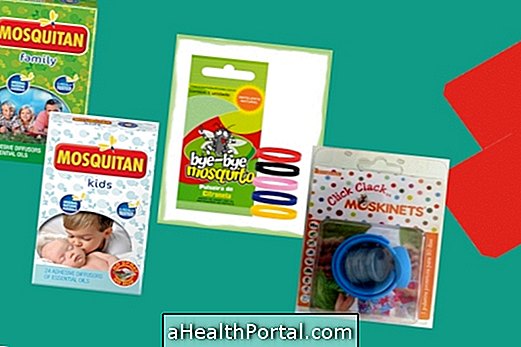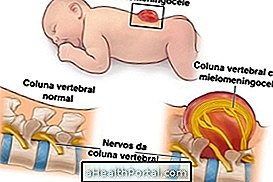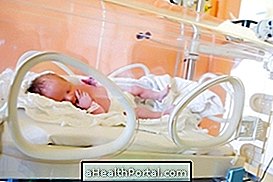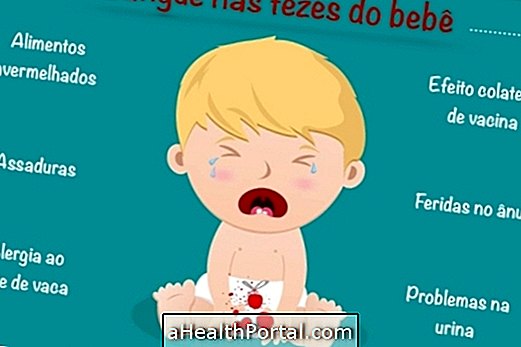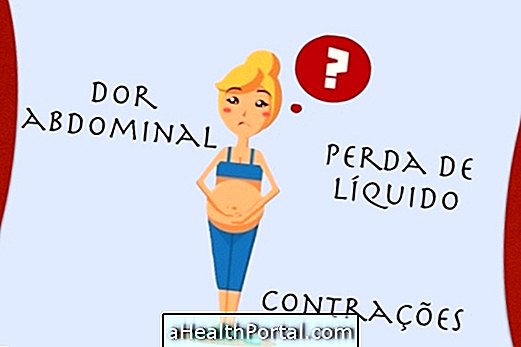Baby gnawing is characterized by the delivery of a small amount of milk through the mouth after suckling or taking the bottle, without having to make any effort. This condition is very common in newborn babies and stays up to about 6 or 7 months, but it can be uncomfortable for the baby and for the parents because the baby may cry next.
Some very important tips for decreasing baby's crawling include:
- Prevent the baby from swallowing too much air during feeding;
- Always put the baby to burp, during and after the feedings;
- Dress the baby in tight little clothes and diapers;
- Avoid moving the baby abruptly after the feeding;
- Just lie down for 30 minutes after breastfeeding;
- Babies who do not breastfeed can take a specific reflux milk, such as Aptamil AR, Nan AR or Enfamil AR Premium. Learn more details here.
To decrease the amount of air swallowed by the baby, the mother should adopt a correct breastfeeding technique, or, in the case of the baby sucking on the bottle, keep the beak always full of milk.

In addition, if it is necessary to throw the baby after he belches, a cushion should be placed under the mattress, not under the baby's head, to lift the baby's head and place it on its side. Another possibility is to place a 5 to 10 cm high wedge at the head of the crib at an angle of 30 degrees to keep the head always higher than the feet.
In cases where episodes of gulfs are very frequent and following these measures is not enough the pediatrician may recommend taking medicines like domperidone or cisapride, for example.
How to put the baby to burp


To put the baby to burp one can use one of the following techniques:
- Place baby on his mother's shoulder and gently pat his back, as picture 1 shows;
- Place the baby sitting on his lap and with one hand hold the baby 's head and with the other give the baby a soft pat on the back as shown in figure 2.
These techniques should be done during breastfeeding and after suckling to eliminate excess air and prevent the appearance of gulf.
Why Babies Golf
Gastroesophageal reflux, popularly known as groggling in the baby, is a normal condition that affects all newborn babies. Groggling is normal until 6 to 7 months of age, at which time the introduction of other foods more pastey, than the mother's milk and the bottle, and also with the more upright position of the child begins.
When from that stage the gut remains the baby should be evaluated by the pediatrician because there may be situations such as congenital esophageal stricture, tracheoesophageal fistula, esophageal atresia, swallowing disorders, hypertrophic pyloric stenosis, gastric or duodenal ulcer, annular pancreas, intestinal pseudo-obstruction, food allergy (cow's milk protein), urinary tract infection, intestinal parasites, genetic-metabolic diseases, asthma, cystic fibrosis or central nervous system disorders, for example.
However, when itching disturbs the baby or when it is green, it may be necessary to consult your pediatrician, know when to Know When to Golf is Normal.
How to Differentiate the Gulf from Vomiting
In order to differentiate the gulf from an episode of vomit, it is necessary to observe other signs present as: the effort that the baby makes with the body, because in the case of vomit some effort is necessary, whereas in the gulf no effort is necessary, because the from the mouth. In the case of vomiting, the baby may also show signs that he is not feeling well, whimpering or crying, while in the gulf he may appear to be normal.
However, when the baby has frequent episodes of gulf, the fluid may be acidic and cause irritation to the esophagus and larynx, so during a gulf episode the baby may experience excessive crying, irritability, sleep disorders, restlessness and refusal suck or take the bottle.
